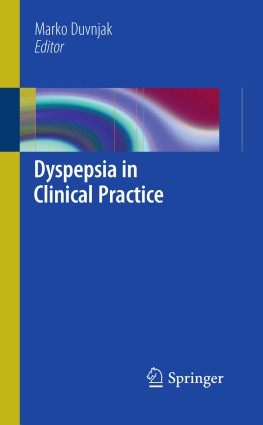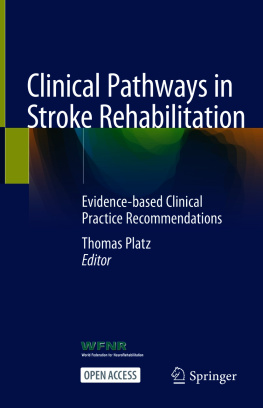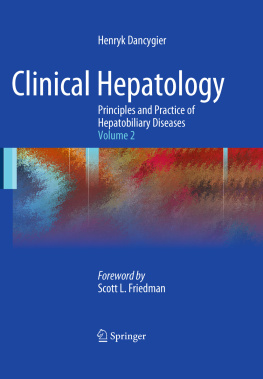Introduction
Dyspepsia, perceived as a very common and sometimes disabling problem, presents a formidable challenge to the clinician and clinical investigator alike. While we all can enumerate a number of symptoms that could be regarded as components of this syndrome, many, if not all, are nonspecific in terms of organ of origin or underlying pathophysiology. Overlap with other common symptomatic gastrointestinal disorders, such as functional heartburn and irritable bowel syndrome (IBS), is also an issue; where does dyspepsia end and reflux begin? It is in this context that definitions of dyspepsia, which can guide the clinician in diagnosis and therapy and provide the investigator with coherent study populations, must be developed.
What is Dyspepsia?: An Overview
Dyspepsia is not a disease but rather a symptom, or more usually, a symptom complex that is common, affecting up to 29% of people in the community, in some surveys [].
One would imagine, therefore, given its frequency and impact that dyspepsia was a readily definable term; in reality, this is far from being the case. Indeed, difficulties with definition have bedeviled this whole area and have generated much confusion and halted progress in research. The term dyspepsia is, of course, a medical term generally arrived at following interpretation of a patients symptom or symptoms. Inherent to this approach are the hazards of communication and interpretation factors that are influenced by several variables including ethnicity, culture, age, and above all, language.
The word dyspepsia is derived from the Greek - (Dys-) and (Pepse) and can be literally translated as bad digestion. Dyspepsia can, accordingly, be regarded as synonymous with the lay term indigestion, so commonly used in the English speaking world. Indeed the term dyspepsia can be and often is used interchangeably with indigestion to describe a number of disparate symptoms (from pain to fullness, from heartburn to nausea, from belching to early satiety, etc.), which are considered by the patient or his/her physician to arise in the area of the upper abdomen or lower chest. Only through a careful and thorough interrogation of the patient can an accurate and reproducible interpretation of exactly what is meant by a symptom be reached. Matters become even more complicated as one strays from English; while the term dyspepsia is a feature of many languages of European origin and its interpretation is relatively similar, the same does not hold true elsewhere. Regrettably, there have been few efforts to translate this symptom or symptom complex into non-European languages or to understand how a Japanese or Chinese patient, for example, gives voice to his or her upper gastrointestinal symptoms. Further complicating the study of dyspepsia is the relative nonspecificity of its constituent symptoms and the fact that numerous pathological processes may be at play; differentiating between them on the basis of symptoms alone can seem, at times, Quixotic. Over the years, we have learned at our cost that, with the notable exception of heartburn, dyspepsia symptoms are poorly predictive of underlying pathology and, most disappointingly, once heartburn is excluded, even less helpful in indicating likely therapeutic responses.
These difficulties with definition spill over from the clinical into the research arena and render the interpretation of the literature, and, especially that of clinical trials, challenging and frustrating, as investigators provide definitions of dyspepsia, which range from the highly complex to the entirely nebulous.
Dyspepsia has been with us for a long time with the earliest documented instances reported in Scotland in the mid-eighteenth century and in the USA from the late eighteenth century. Interestingly, these recordings of the term dyspepsia occurred in advance of the rise in the incidence of peptic ulcer disease, which is thought to have begun in the late nineteenth century []. What precise pathology these early reports of dyspepsia referred to is unknown. From the late nineteenth century until the latter half of the last century two diseases, peptic ulcer disease and gastric carcinoma loomed large in the differential diagnosis of the dyspeptic patient and much effort was exerted into the development of clinical algorithms that could reliably differentiate between these entities as well as between duodenal and gastric ulcers. As these pathologies declined in prevalence in the West, new challenges emerged, such as the definition of functional dyspepsia (FD) and the separation of FD from two, now very prevalent, disorders, gastroesophageal reflux disease (GERD) and IBS.
What Symptoms Does Dyspepsia Encompass?
In a definition that focused on functional dyspepsia, the Rome process, in its second iteration, Rome II, defined dyspepsia, in a restrictive manner, as pain or discomfort centered in the upper abdomen []. Does this mean we exclude retrosternal symptoms and focus on the upper abdomen? Does this mean the exclusion of reflux, excessive belching, and heartburn? Equally, if we focus on the upper abdomen, does this mean that we exclude the patient with such additional symptoms as lower abdominal bloating and crampy abdominal pain, which are oft associated with IBS?
These questions go beyond mere semantics as their responses have significant implications for the design of clinical trials; a study that excludes all reflux sufferers will recruit a very different patient population than one which is more inclusive. While it can be argued that the former strategy will provide a more homogenous population, it scarcely takes account of clinical reality: overlap between functional diseases of the esophagus, stomach, and the remainder of the bowel are common and often inseparable! Indeed, between 14 and 27% of patients with either GERD, dyspepsia, or IBS will complain of symptoms suggestive of either one, or both, of the other disorders [].
At the other end of the gastrointestinal tract, the margins between GERD and, especially, those individuals with nonerosive reflux disease (NERD) and FD are equally blurred [].
One is compelled to ask, therefore, whether FD and functional heartburn, on the one hand, or FD and IBS, on the other, are merely different manifestations of the same condition [].








